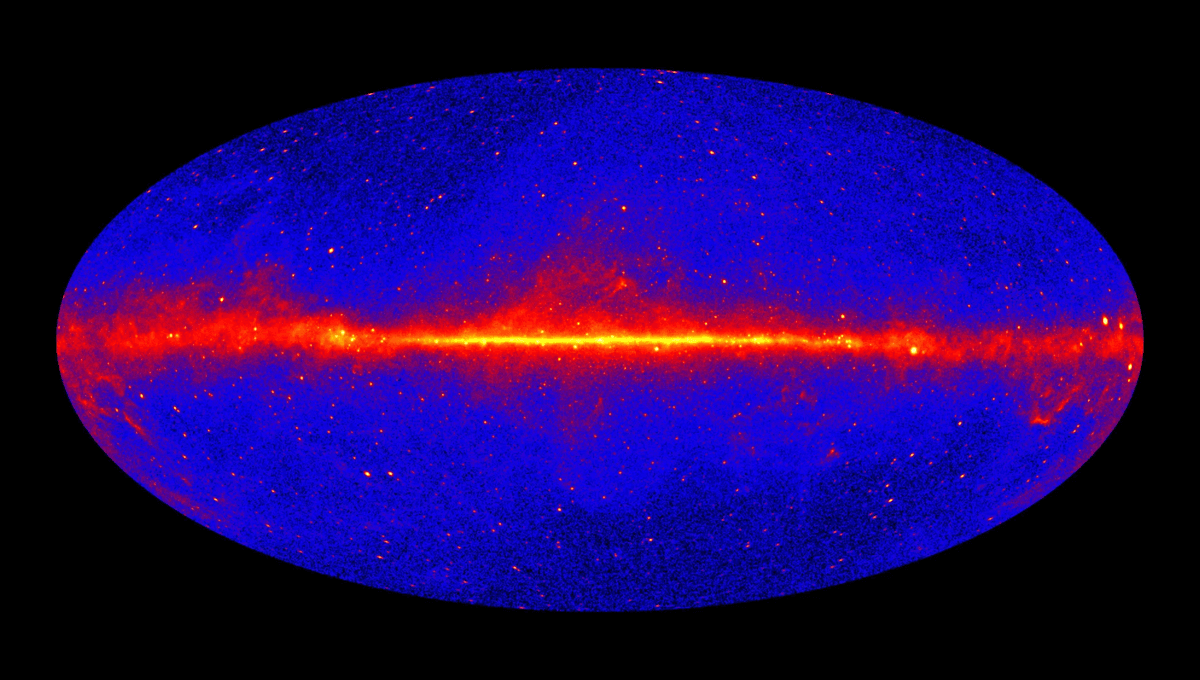
Gamma rays are the most powerful type of light, extremely dangerous to life forms. They can form in nuclear reactions, as well as in and around powerful astronomical events and bodies, such as black holes, pulsars, and supernovae. Studying the universe in gamma rays opens a window on these extremes and NASA’s Fermi has been doing that for a decade and a half.
The telescope scanned the whole sky every day using its Large Area Telescope (LAT) between August 2008 and August 2022. The video below shows two views used by scientists. One focuses on the plane of the Milky Way at the center, and one is made by two hemispherical views, with our galaxy at the edges. The first helps with studying what goes on nearer to home, and the other with what happens in other galaxies.
Variations in the intensity of the Milky Way band are usually artifacts of how data is collected, but there are things that change in the galaxy that are worth noticing. Pulsars, a particular type of pulsating neutron star, are among them.
And there is also our Sun, seen moving about in this timelapse mostly quietly until a flare is released. The one from November 2017, the brightest we’d had in the last six years until last week, shows just how much energy these events release. Gamma rays are 100 million times more energetic than visible light.
“One of the first things to strike your eye in the movie is a source that steadily arcs across the screen. That’s our Sun, whose apparent movement reflects Earth’s yearly orbital motion around it,” Fermi Deputy Project Scientist Judy Racusin, from NASA’s Goddard Space Flight Center, said in a statement.
Racusin narrates the movie, explaining the science and highlighting some of the objects seen by the telescope. The jets from supermassive black holes are among the targets when it comes to extragalactic observations, and the researchers are particularly excited when these sources change intensity.
“The variations tell us that something about these jets has changed,” Racusin said. “We routinely watch these sources and alert other telescopes, in space and on the ground, when something interesting is going on. We have to be quick to catch these flares before they fade away, and the more observations we can collect, the better we’ll be able to understand these events.”
Fermi is still going strong, so we look forward to many more years of data from the highest energies in the cosmos.
Source Link: NASA Releases Gorgeous Timelapse Of The Gamma-Ray Sky Over 14 Years